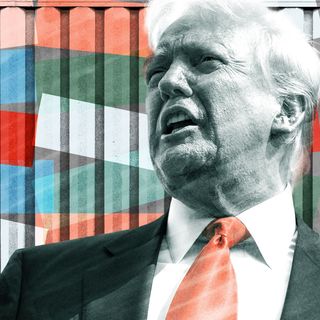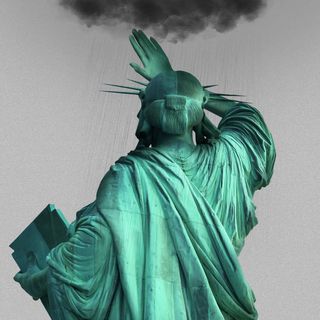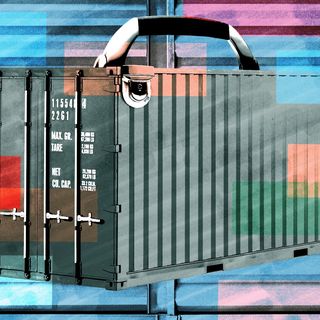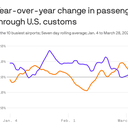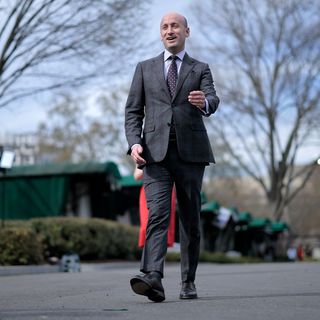Tariffs bring overnight economic chaos
In one 48-minute speech, President Trump scrambled every American's budget, every U.S. company's balance sheet and every global alliance.
- Tariffs, a sometimes obscure economic tool, have massive power, especially when enacted this expansively.
Why it matters: Think fundamental re-ordering of the economy. Americans are staring down a disruption to their standard of living. Companies are about to find out how bad bad can get. The ripple effects may be felt for years to come.
Zoom out: Trump is right that plenty of countries engage in unfair trade practices, and that globalization has hollowed out key parts of America's industrial base, Axios' Zachary Basu reports.
- But this historic tariff barrage isn't about targeted leverage or negotiated fixes. It's about unwinding decades of perceived injustices through blunt force — even against uninhabited islands and impoverished enclaves, incapable of "victimizing" the U.S.
- Trump believes the American people share his grievances, and he's willing to radically remake the global economic order, no matter the cost.
Reality check: That cost will likely be steep.
- Trump is inviting American factories to rise up and fill the demand for goods that consumers and companies get from other countries — but factories can't do that overnight, if at all.
- One big reason the U.S. has trade deficits is that we spent decades becoming a services economy, with the economic might to make our goods more cheaply elsewhere and buy lots of them.
- In the 1970s, a quarter of Americans worked in manufacturing. Now, less than 10% do. Recruiting and training a manufacturing workforce will take time and money.
Case in point: While America has existing infrastructure for some types of manufacturing, like cars, it's not that simple for every product. The U.S. has lost the ability to make some things as its economy has transitioned away from manufacturing.
- "Things like magnets, which are really critical for batteries and other core electronic technologies. We've really lost the capacity to build in the U.S.," Ben Armstrong at MIT's Industrial Performance Center told Marketplace.
- Bringing that back takes years, plus big investments from the government and companies.
The stakes: That means, at least in the short-term, everything from clothes to coffee to iPhones to wine will likely get more expensive.
- Companies are expecting to take a hit, and asking themselves whether they can afford to absorb increased costs, or if they have to pass them along to a potentially unwilling consumer.
- The latest jobs report was solid, but there are plenty of dark economic clouds, and Wall Street says recession odds are rising quickly.
What to watch: Whether the Trump administration does anything to offset the pain.
- Tariffs will bring in some money themselves (the administration says up to $600 billion a year, which would cover about a third of the U.S. budget deficit).
- There's been speculation he could bail out farmers, as he did during his first term.
- And Trump still wants to cut taxes — not just extending his 2017 cuts, but new reductions on things like overtime and tips.
But Federal Reserve chair Jerome Powell said Friday that bigger-than-expected tariffs will translate into higher inflation and slower economic growth — and that the higher inflation could be persistent, not temporary, Axios' Neil Irwin reports.
- He didn't use the dreaded s-word — stagflation — but it's the thing economists fear most on the horizon.


